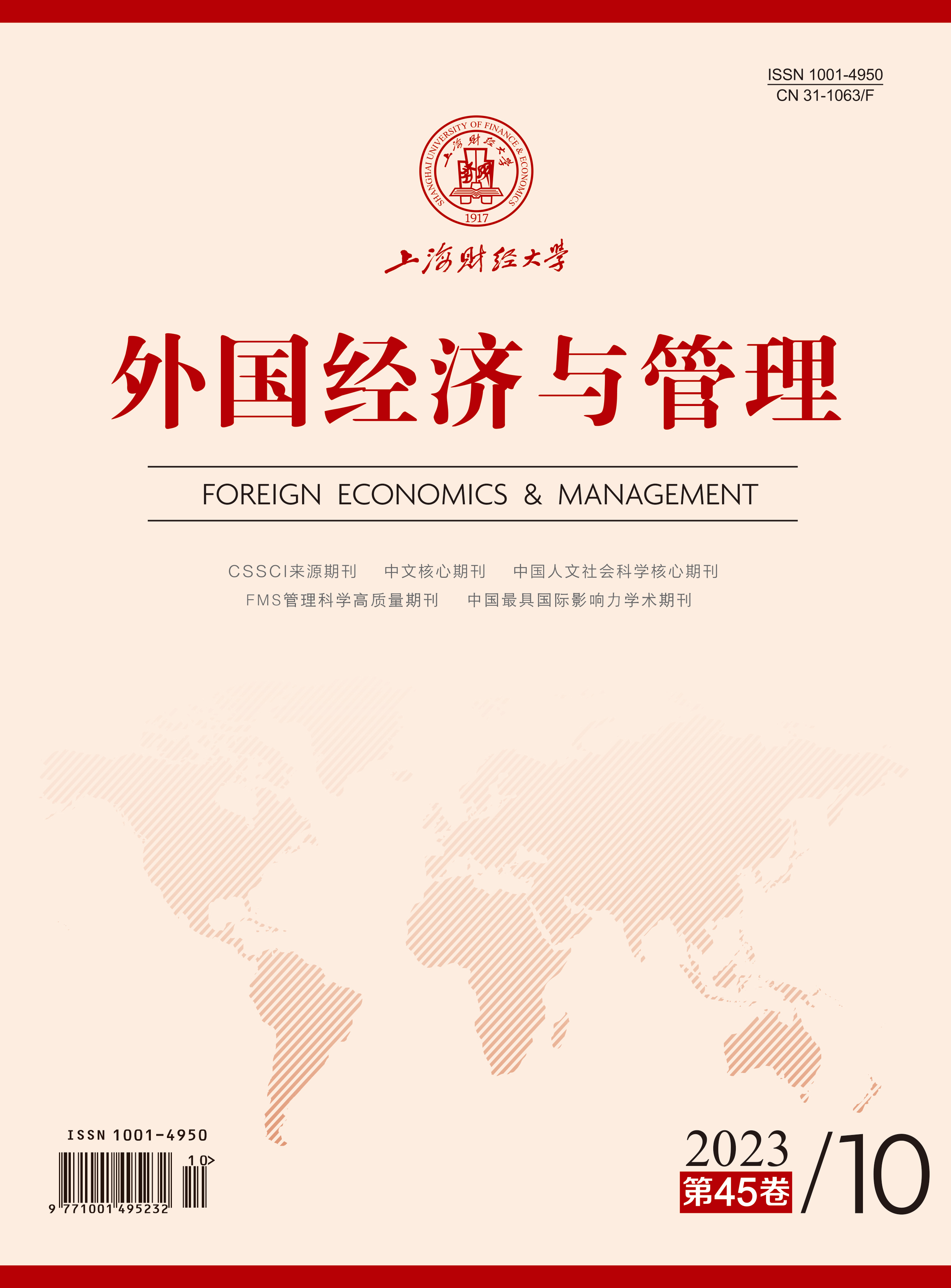在双重劣势情境的限制下,一部分本土中小供应商仍能在全球价值链中快速成长为隐形冠军企业,并得到了学界和业界的广泛关注。然而,鲜有文献对此进行深入诠释。本文选取我国3家隐形冠军企业作为案例研究对象,解析了在全球价值链中隐形冠军企业的形成过程以及其中的关键因素。研究发现:(1)关系嵌入深度是隐形冠军企业在全球价值链特定生产制造环节中获得持续性竞争优势的关键因素。(2)拓展利基市场广度是隐形冠军企业在利基市场中快速获得市场领导地位的关键因素。(3)关系嵌入深度和拓展利基市场广度的循环促进机制为隐形冠军企业在全球价值链中不断升级发展提供可持续动力。同时,本土独特的情境特征是两类关键因素产生的根本原因。本文不仅丰富了隐形冠军和全球价值链的相关文献,也为我国其他中小供应商在全球价值链中摆脱低端锁定困局、成为竞争优势显著的隐形冠军企业提供了重要启示。
全球价值链下我国隐形冠军企业形成过程的多案例研究
摘要
参考文献
9 Audretsch D B, Lehmann E E, Schenkenhofer J. Internationalization strategies of hidden champions: Lessons from Germany[J]. Multinational Business Review, 2018, 26(1): 2-24. DOI:10.1108/MBR-01-2018-0006
10 Buckley P J, Hashai N. The role of technological catch up and domestic market growth in the genesis of emerging country based multinationals[J]. Research Policy, 2014, 43(2): 423-437. DOI:10.1016/j.respol.2013.11.004
11 Cano-Kollmann M, Cantwell J, Hannigan T J, et al. Knowledge connectivity: An agenda for innovation research in international business[J]. Journal of International Business Studies, 2016, 47(3): 255-262. DOI:10.1057/jibs.2016.8
12 Choksy U S, Sinkovics N, Sinkovics R R. Exploring the relationship between upgrading and capturing profits from GVC participation for disadvantaged suppliers in developing countries[J]. Canadian Journal of Administrative Sciences, 2017, 34(4): 356-386. DOI:10.1002/cjas.1455
13 Eisenhardt K M. Agency theory: An assessment and review[J]. The Academy of Management Review, 1989, 14(1): 57-74. DOI:10.2307/258191
14 Eisenhardt K M, Graebner M E. Theory building from cases: Opportunities and challenges[J]. Academy of Management Journal, 2007, 50(1): 25-32. DOI:10.5465/amj.2007.24160888
15 Gaur A, Kumar M. A systematic approach to conducting review studies: An assessment of content analysis in 25 years of IB research[J]. Journal of World Business, 2018, 53(2): 280-289. DOI:10.1016/j.jwb.2017.11.003
16 Gereffi G. Global value chains in a Post-Washington consensus world[J]. Review of International Political Economy, 2014, 21(1): 9-37. DOI:10.1080/09692290.2012.756414
17 Gereffi G, Lee J. Economic and social upgrading in global value chains and industrial clusters: Why governance matters[J]. Journal of Business Ethics, 2016, 133(1): 25-38. DOI:10.1007/s10551-014-2373-7
18 Gioia D A, Corley K G, Hamilton A L. Seeking qualitative rigor in inductive research: Notes on the Gioia methodology[J]. Organizational Research Methods, 2013, 16(1): 15-31. DOI:10.1177/1094428112452151
19 Giuliani E, Pietrobelli C, Rabellotti R. Upgrading in global value chains: Lessons from Latin American clusters[J]. World Development, 2005, 33(4): 549-573. DOI:10.1016/j.worlddev.2005.01.002
20 Hennart J F. Springing from where? How emerging market firms become multinational enterprises[J]. International Journal of Emerging Markets, 2018, 13(3): 568-585. DOI:10.1108/IJoEM-09-2017-0324
21 Humphrey J, Schmitz H. Governance in global value chains[J]. IDS Bulletin, 2001, 32(3): 19-29. DOI:10.1111/j.1759-5436.2001.mp32003003.x
22 Johanson J, Vahlne J E. The Uppsala internationalization process model revisited: From liability of foreignness to liability of outsidership[J]. Journal of International Business Studies, 2009, 40(9): 1411-1431. DOI:10.1057/jibs.2009.24
23 Kothari T, Kotabe M, Murphy P. Rules of the game for emerging market multinational companies from China and India[J]. Journal of International Management, 2013, 19(3): 276-299. DOI:10.1016/j.intman.2013.03.007
24 Landau C, Karna A, Richter A, et al. Institutional leverage capability: Creating and using institutional advantages for internationalization[J]. Global Strategy Journal, 2016, 6(1): 50-68. DOI:10.1002/gsj.1108
25 Lei L N, Wu X B. Thinking like a specialist or a generalist? Evidence from hidden champions in China[J]. Asian Business & Management, 2022, 21(1): 25-57.
26 Meyer K E, Peng M W. Theoretical foundations of emerging economy business research[J]. Journal of International Business Studies, 2016, 47(1): 3-22. DOI:10.1057/jibs.2015.34
27 Morrison A, Pietrobelli C, Rabellotti R. Global value chains and technological capabilities: A framework to study learning and innovation in developing countries[J]. Oxford Development Studies, 2008, 36(1): 39-58. DOI:10.1080/13600810701848144
28 Pettigrew A M. What is a processual analysis?[J]. Scandinavian Journal of Management, 1997, 13(4): 337-348. DOI:10.1016/S0956-5221(97)00020-1
29 Ponte S, Ewert J. Which way is ‘‘Up” in upgrading? Trajectories of change in the value chain for south African wine[J]. World Development, 2009, 37(10): 1637-1650. DOI:10.1016/j.worlddev.2009.03.008
30 Ramsey J R, Abi Aad A, Jiang C D, et al. Emergence of cultural intelligence and global mindset capital: A multilevel model[J]. Multinational Business Review, 2016, 24(2): 106-122. DOI:10.1108/MBR-12-2015-0062
31 Rant M B, Cerne S K. Becoming a hidden champion: From selective use of customer intimacy and product leadership to business attractiveness[J]. South East European Journal of Economics and Business, 2017, 12(1): 89-103. DOI:10.1515/jeb-2017-0008
32 Sako M, Zylberberg E. Supplier strategy in global value chains: Shaping governance and profiting from upgrading[J]. Socio-Economic Review, 2019, 17(3): 687-707. DOI:10.1093/ser/mwx049
33 Schubert T, Baier E, Rammer C. Firm capabilities, technological dynamism and the internationalisation of innovation: A behavioural approach[J]. Journal of International Business Studies, 2018, 49(1): 70-95. DOI:10.1057/s41267-017-0101-0
34 Simon H. Hidden champions: Lessons from 500 of the World’s best unknown companies[M]. Boston: Harvard Business Review Press, 1996.
35 Simon H. Hidden Champions of the twenty-first century: Success strategies of unknown world market leaders[M]. New York: Springer, 2009.
36 Simon H. Hidden Champions-Aufbruch Nach Globalia: Die Erfolgsstrategien unbekannter Weltmarktführer[M]. Frankfurt am Main: Campus Verlag, 2012.
37 Sturgeon T J. Modular production networks: A new american model of industrial organization[J]. Industrial and Corporate Change, 2002, 11(3): 451-496. DOI:10.1093/icc/11.3.451
38 Su J Q, Ma H H, Zhang S. Developing innovation capabilities for upgrading in global value chains: Evidence from China[J]. International Journal of Emerging Markets, 2021, 16(8): 1654-1676. DOI:10.1108/IJOEM-12-2019-1014
39 Van Agtmael A. The emerging markets century: How a new breed of world-class companies is overtaking the world[M]. New York: Free Press, 2007.
40 Van De Ven A H, Poole M. S Explaining development and change in organizations[J]. The Academy of Management Review, 1995, 20(3): 510-540. DOI:10.2307/258786
41 Voudouris I, Lioukas S, Makridakis S, et al. Greek hidden champions: Lessons from small, little-known firms in Greece[J]. European Management Journal, 2000, 18(6): 663-674. DOI:10.1016/S0263-2373(00)00057-8
42 Werner M. Beyond upgrading: Gendered labor and the restructuring of firms in the Dominican Republic[J]. EcoNomic Geography, 2012, 88(4): 403-422. DOI:10.1111/j.1944-8287.2012.01163.x
43 Xing Y J, Liu Y P. Poetry and leadership in light of ambiguity and logic of appropriateness[J]. Management and Organization Review, 2015, 11(4): 763-793. DOI:10.1017/mor.2015.18
44 Yang M, Deng P. Cross-border M&As by Chinese companies in advanced countries: Antecedents and implications[J]. Thunderbird International Business Review, 2017, 59(3): 263-280. DOI:10.1002/tie.21767
45 Yeung H W C, Coe N M. Toward a dynamic theory of global production networks[J]. EcoNomic Geography, 2015, 91(1): 29-58. DOI:10.1111/ecge.12063
46 Yoon B. How do hidden champions differ from normal small and medium enterprises (SMEs) in innovation activities[J]. Journal of Applied Sciences Research, 2013, 9(13): 6257-6263.
引用本文
贾依帛, 苏敬勤, 张雅洁. 全球价值链下我国隐形冠军企业形成过程的多案例研究[J]. 外国经济与管理, 2023, 45(10): 35-50.
导出参考文献,格式为:
本期封面
相关论文





 5592
5592  7006
7006

